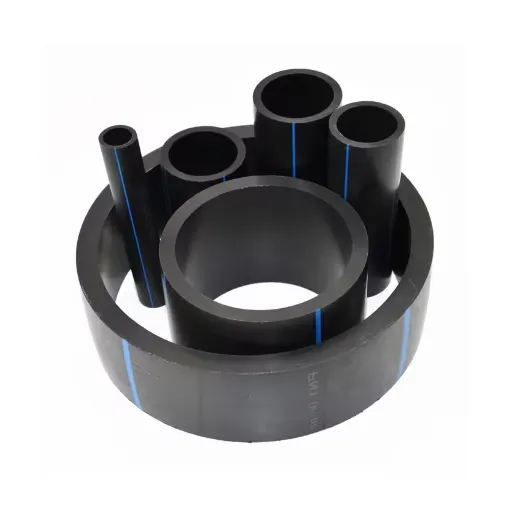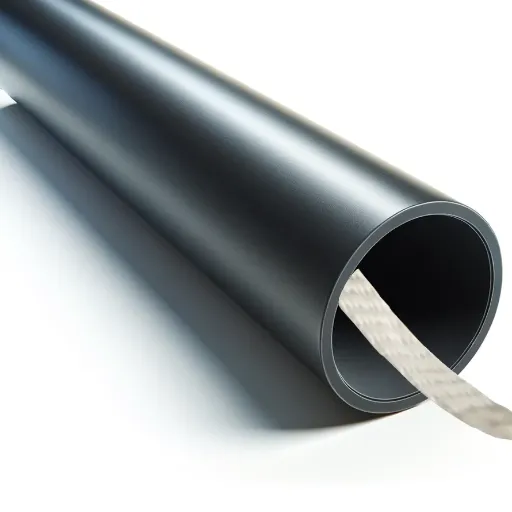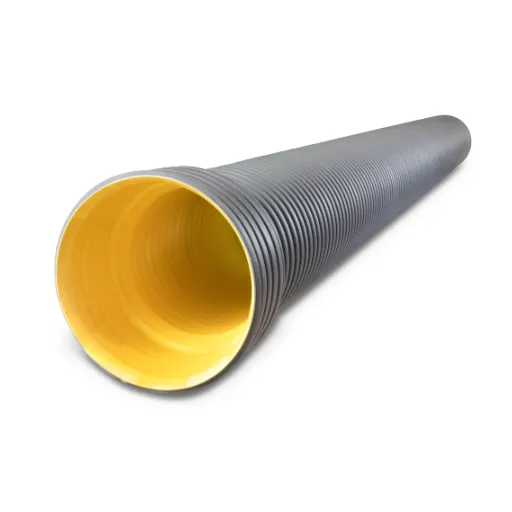High-density polyethylene (HDPE) drainage pipes have become a pivotal solution in infrastructure and construction projects, known for their durability, flexibility, and cost-effectiveness. Among the various sizes available, the 30-inch HDPE drainage pipe stands out for its ability to handle substantial water flow while maintaining structural integrity under significant loads. This article explores the technical specifications, benefits, and diverse applications of 30-inch HDPE drainage pipes, offering valuable insights for engineers, contractors, and decision-makers seeking reliable drainage solutions. By understanding the characteristics and practical uses of these pipes, stakeholders can make informed decisions that align with project requirements and long-term performance goals.
What Are the Product Specifications for 30-inch HDPE Pipe?
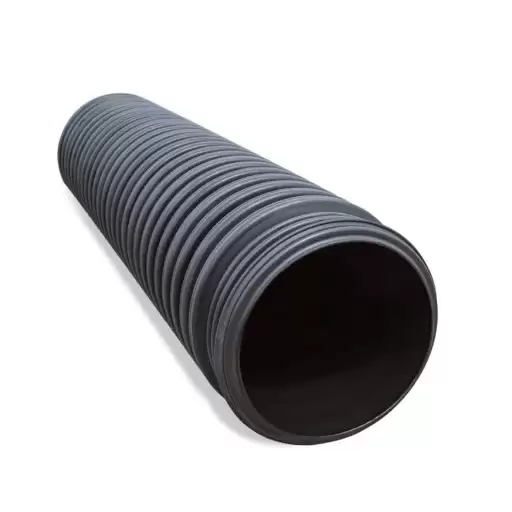
Understanding Wall Pipe Structures
The dual walls of a 30 inch HDPE pipe (High-Density Polyethylene) are constructed to get the best balance of strength, flexibility, and durability relative to the operating conditions. These pipes are either solid-wall or dual-wall construction which complies with ASTM- International and AASHTO norms for consistency and quality in performance.
Solid-wall HDPE pipes are made of a single, uniform layer of polyethylene material. This offers them great capabilities of withstanding both internal and external pressure, making them suitable for gravity flow or pressurized systems. The smooth interior surface of HDPE pipes reduces friction, increasing flow capacity while lowering energy consumption over time.
Dual wall HDPE pipes feature a smooth inner wall and corrugated outer wall for increased hydraulic efficiency. This increases the structural strength making it very effective for applications that deal with high load requirments such as storm water management as well as heavy traffic areas. Both types are lightweight, corrosion resistant, have a longer life span, and require lower maintenance, thus reducing lifecycle costs.
Compared to Culvert Alternatives
Plastic pipes outclass traditional materials like reinforced concrete and metal culverts in various ways. One of the more obvious advantages is that plastic pipes are significantly lighter than their concrete or metal counterparts, which makes transportation and installation easier. Being lightweight also reduces spending on complicated machinery, cutting down costs and timelines for construction projects.
Compared to metal culverts and concrete pipes, plastic pipes excel in resisting corrosion. Unlike metals, which easily rust, and concrete that degrades due to chemical exposure, freeze-thaw cycles, or other harsh circumstances, plastic pipes can withstand great pressure while maintaining their structural integrity. These resistances also lower the need for frequent repair or replacement, cutting long-term maintenance costs.
Furthermore, the plastic pipes with smooth interiors have better water flow and are more hydraulically efficient than some conventional materials. This improvement in water flow could lead to enhanced performance of the system, especially when there is high water flow through the system. If there is extremely heavy traffic and a high amount of load is required to be sustained, reinforced concrete may still be best due to its structural strength. All in all, the best material to use takes into consideration the environmental conditions, load requirements, and cost.
How Is 30 30-inch HDPE Pipe Installed?
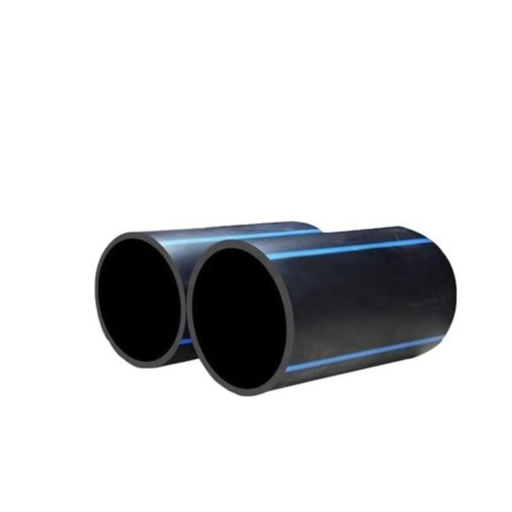
Preparation and Installation Techniques
Optimal performance and longevity when installing a 30-inch HDPE pipe requires specific attention to planning, standards, conditions, and integration of the entire work site. The scope of work or preparation phase commences with a site survey, which includes evaluation of the soils, determining the depth of the trench, and identifying any potential hindrances. A site geotechnical assessment may be required to identify any additional soil stabilization that may be necessary.
Concerning the size and setting of the shovel, trenching works should be done within the boundaries of safety, narrow width, and non-escorted bridges, alongside padding for workers and tool clearance. Trench width must be appropriate for unobstructed fittings of the pipe radius. Adequate trench, often loosely graded to eliminate grading shelter deemed sagging or point loading that ends up converging to stress concentration on the Pipe, is referred to as a blanket trench, which is devoid of debris. As a rule of thumb, a trench of 4 to 6 inches that is appropriately graded plus uniformly compacted with sealing and gravel forms the no-at-limit uniform supply.
The methods used to join a pipe section during installation include heat fusion as well as butt and electrofusion, depending on the specific requirements of the project as well as the environment. Heat fusion guarantees that pipe joints will not leak by melting the ends of each pipe and fusing them into a single structure. The strength of the joint is directly affected by the correct positioning of heat and alignment through addition of heat.
During backfilling of the trench, the pipe is first placed in it, after which the upper and lower sides of the pipe are discretely filled with earth. The focus for the first stage of this step is to compact the fill in the sides of the pipe so there is little sideways shift or deformation. Avoiding excessive compressive effort directly on top of the pipe is vital, as that may put stress on the structure. It might also be necessary to allow for other factors, such as expansion and contraction in the use of HDPE pipes in harsh environmental conditions, especially in places where temperatures vary widely.
Furthermore, modern inventions like trenchless technology—horizontal directional drilling (HDD) and pipe bursting—have heightened installation efficiency by lowering the need for excavation and disrupting the surface as little as possible. These methods are chosen based on the depth of installation, type of soil, and other infrastructures present. Trenchless methods give significant savings in expenses and duration of work and project completion while keeping the HDPE pipe system’s structural integrity.
Considering the provided instructions, the 30-inch HDPE pipe systems will perform exceptionally well and will provide best-in-class durability and reliability across a wide range of varying conditions.
Essential Fitting and Joint Considerations
To achieve proper operation and ensure the longevity of systems utilizing 30-inch HDPE pipes, the appropriate installation and selection of materials, such as joints and fittings, is imperative. Below are five considerations of a greater scope:
- Joints: By using butt fusion, you can join pipes without any leakage and have a seamless welded system. HDPE pipes can be fused using the butt fusion method for HDPE joints. This requires the ends of 2 pipes to be heated separately and then joined using a specific set of pressures. The two pipes are bonded together permanently, with the pipe undermining the elbow in resistance and toughness. It is very important to manage temperatures, alignment, pressure, and other aspects of the operation to obtain a satisfactory outcome.
- Fittings: This is commonly done for repairs or when butt fusion is impossible. When parts require a joint to be made, specialized fittings are used that have electric coils embedded in them, which in turn melt the fitting as well as the pipe’s surface to render it a secure connection. For electrofusion, control of parameters such as voltage and time must be maintained so as to avoid manipulating joint integrity.
- Flanged Connections: Backup rings with flange adapters serve the purpose of joining HDPE pipes to other constituents like steel piping and valves, allowing for easy interfacing. This method gives a straightforward approach to connection, often utilized in high-pressure or temporary installations. Each bolt must be properly torqued, and appropriate gaskets employed in order to create a leak-proof seal.
- Extrusion Welding: Extrusion welding is a technique that is generally employed for non-pressure tasks such as custom fittings or repair jobs. The process includes an extruder which deposits molten HDPE on the surfaces to be joined resulting in a bonded structure. It is a highly specialized technique that requires skilled operators to achieve desired results for the efficiency of the system in the long run.
- Mechanical Couplings: Joining HDPE pipes without the application of heat welding methods is made faster and easier through the use of mechanical couplings. The majority of these couplings include rubber gaskets or seals which form a flexible joint that is water-tight. These joints are convenient, however, undue forces may lead to misalignment and excessive loosening that results in leak paths or complete dislocation from the intended site.
Finishing with these fitting and jointing techniques helps a project team achieve their set targets for strong, durable and reliable connections in HDPE pipe systems while meeting the level of required performance and safety standards.
Common System Setup Issues
One of the main issues encountered with systems involving HDPE pipes deals with the improper alignment of pipes throughout the installation process. Even the smallest of misalignments can cause unequal pressure stress on the joints, which can cause leaks, joint damage, or stress on the system in the long run. To resolve this issue, I make it a point to accurately place all pipes and fittings in position and make sure that they are adequately tightened using basic alignment equipment and inspection techniques.
Incorrect surface preparation of pipes and fittings is another common issue. The presence of contaminants like dirt, grease, or moisture significantly reduces the bond strength of connections, especially if fusion welding or mechanical coupling is used. I make it a point to scrub and inspect the pipe surfaces so that they meet the standards set by the manufacturer, which ensures that the bonds will be reliable and safe. Also, not all prescribed heating and cooling times during fusion processes are followed, and this is key for optimal joint performance.
Finally, lack of attention focused on pressure testing post installation can result in undetected weaknesses throughout the system. I focus on carrying out basic pressure tests under the parameters set to ensure that the connections made on the pipes are intact. By systematically addressing these common setup problems, these HDPE pipe systems can be depended on and operated safely while remaining efficient.
Where Can 30-Inch HDPE Pipe Be Applied?
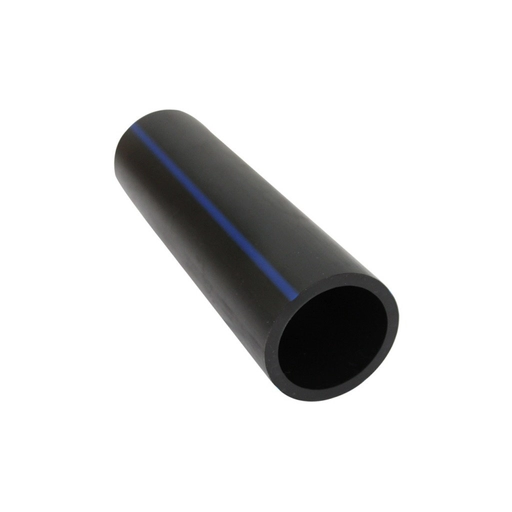
Typical Drainage System Uses
Due to corrosion, chemical resistance, and their light weight, endurance, and durability, 30-inch High-Density Polyethylene (HDPE) pipes are commonly used in different drainage systems. Below are five key applications:
- Stormwater Management: In heading off blockages as water flows, the internal surface smoothness of the HDPE pipes facilitates effective water flow. Additionally, these pipes are utilized in the direction and management of stormwater. The pipes can also withstand strong environmental conditions which makes them suitable when dealing with stormwater runoff whether in urban or rural areas. Moreover, HDPE pipes can withstand high flow rates.
- Sanitary Sewer Systems: With minimal maintenance, these pipes sustain an extensive service life. The structural integrity of the pipes enables them to transport wastewater and sewage without any leakage. Also, the long service with ease of maintenance enhances the appeal of these pipes with non corrosive effluents qualms. Furthermore, these pipes are remarkably strong while being transported and highly resistant to strong chemical sewer systems.
- Agricultural Drainage: The HDPE pipes are extensively used in preventing farmland drainage systems from waterlogging. This water logging prevents soil aeration, which allowing for more crop yield. Additionally, the resistance to chemicals and soil fertilizers allows for a change of field conditions, making them practical in the agricultural industries.
- Industrial Discharge Systems: Farms and agricultural industries enable people to harness the benefits of soil structures and chemicals. However, numerous industrial procedures expose processes containing highly aggressive and oxidizing HDPE pipes. These substances retain structural integrity even when harshly exposed to these chemicals and high temperatures, which makes them suitable for handling such discharges.
- Culvert Installations: A culvert is a type of pipe capable of carrying large amounts of water and is easy to install, making it light in weight. That makes it the preferred choice. Because of its elsasticity, it can endure movement in ground while not compromising structure reducing chances of failing or crumpling.
Incorporating a 30-inch HDPE pipe into technology is a perfect example of its applicability across various industries. Combined with proper installation and maintenance, HDPE pipes provide an efficient and durable solution for drainage systems.
Uses in Construction Projects
Fusing flexibility, strength, and affordability, HDPE pipes are vital in contemporary building undertakings. Let’s look into five of their specific applications in construction :
- Water Supply Systems: Because of its non-toxic attributes and durability against rust, potable water is transported through HDPE pipes. Their internal surfaces are smooth, lowering friction, which allows the HDPE pipes to achieve water flow efficiency. It is noteworthy that studies demonstrate HDPE pipes’ water leakage rates to be at least 40% lower than cast iron pipes.
- Sewage And Wastewater Drainage: For sewage and wastewater drainage systems, HDPE pipes are the best choice for use because of its chemical resistant nature. They are built to resist aggressive wastewater chemicals together with high levels of acidity, and all this without requiring constant upkeep. The other advantage of its flexibility is that it can adapt to earth shifts without breaking.
- Storm Water Management Systems: In preparation for heavy rainfall, HDPE pipes are widely used in stormwater drainage systems and for flooding management. Their lightweight nature simplifies transportation and installation, making them an economical option for large-scale systems. This combined with industry data suggesting they withstand stormwater for over 50 years makes HDPEs the ideal pipe.
- Irrigation Systems: HDPE pipes are utilized for irrigation in landscaping and agricultural works for their high resistance to water pressure as well as their UV protection. Their water conserving properties leads to efficient water use in agricultural practices, which is essential for sustainable farming.
- Gas Distribution: Because of the low gas distribution pressure, the lightness and strength of HDPE pipes are beneficial. The seamless construction provides an uninterrupted flow, which makes it stronger for gas use. Since they are unaffected by high temperature, external shocks, or damage, HDPE pipes can be relied on for optimal performance in a range of pressurized conditions.
When integrated into various construction projects, HDPE pipes can provide dependable infrastructure solutions under different industrial and environmental applications.
Benefits of Alternative Applications
HDPE pipes have numerous benefits, even in other industries apart from water or gas distribution. For example, in irrigation, they come in handy as their resistance to corrosion, as well as, toughness ensures contact with soil and fertilizers over extended periods can never be an issue. In addition, their flexibility along with impact resistance makes it useful in seismic regions or areas which are prone to ground movements.
Another notable application is within mining operations, where the ability of HDPE pipes to withstand abrasive materials as well as high-pressure slurry flows makes them useful. Their lightweight nature greatly decreases costs associated with transportation and installation, especially in remote or difficult locations.
Just like that, HDPE pipes are becoming more common in geothermal systems. These pipes have remarkable thermal conductivity and can easily withstand the effects of changing temperature in energy-exchange processes, thus making them the best for sustainable cooling and heating systems. These distinctive characteristics emphasize the effectiveness of HDPE pipes in harsh conditions across various industries.
What Are the Material Benefits of HDPE?
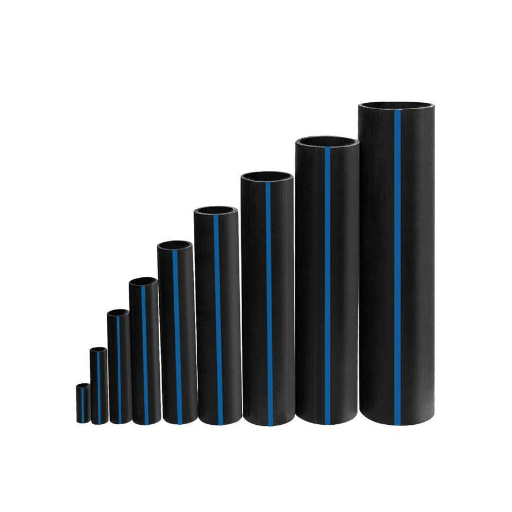
Understanding Resistance to Corrosion and Abrasion
In my professional opinion, one of the greatest benefits of HDPE in its uses within industries is its notable corrosion and abrasion resistance. The non-reactive molecular configuration of HDPE, or High-Density Polyethylene, makes certain that it is not affected by corrosive materials like chemicals, acids, or salts, which are present in a multitude of operational settings. This property prevents material degradation, which significantly lowers the chances of value destruction caused by HDPE in severe conditions over a long period.
Moreover, the toughness that HDPE possesses in its structure provides it with exceptional abrasion resistance. Unlike traditional piping materials such as metals, HDPE does not suffer structural failure under attack by abrasive materials like slurry or sediment transported at high speeds. This level of toughness improves the functional lifespan and reduces the maintenance and costs over time.
Based on my observations and in-depth analysis, I can confidently say that the dual resistance to corrosion and abrasion strengthens HDPE’s strength in other modern engineering applications. Its harsh structural system mitigates the risk of system breakdowns occurring due to wear and tear, thus, maintaining safe and effective operational functionality. In addition to the performance indicator, this feature also fulfills the sustainability requirement because less HDPE system waste is generated by having fewer replacements necessitated by system failures.
Why Choose HDPE Over Reinforced Concrete?
Infrastructure projects now prefer High-Density Polyethylene (HDPE) over traditional reinforced concrete due to its ease of handling. Unlike other materials, HDPE is less likely to corrode due to the presence of moisture or chemicals. Unlike reinforced concrete, which degrades over time with chloride ingress and carbonation, HDPE maintains its non-porous surface.
HDPE’s ability to carry flexural loads also makes it preferable over reinforced concrete, which is prone to damage during seismic activity, soil settlement, or thermal expansion. HDPE does not undergo structural failure, while reinforced concrete does because it undergoes brittle cracking under tension and dynamic loading.
Because of the lightweight of the HDPE components, they can easily be prefabricated which reduces transportation and on-site handling time. Unlike HDPE, reinforced concrete requires extensive formwork, greater curing periods, and labor, making it more expensive.
Considering the environment, HDPE is a better option. Its strength ensures an extended lifespan while requiring less upkeep, meaning less material is consumed and emission is reduced through the product’s life. Additionally, HDPE is recyclable, which mitigates construction waste as opposed to reinforced concrete whose disposal often leads to.
In the end, choosing HDPE instead of reinforced concrete is backed by the lower price, longer useful life, greater flexibility, and less environmental impact, making it more suitable for modern engineering needs.
Advantages of Corrugated Design
Strength, durability, and saving resources all receive particular attention in engineering with the application of the practical advantages that the corrugated design has to offer. It is more efficient to have a unique geometry of construction of the wall in the form of corrugation, as it uses material more economically when compared to the traditional version of the wall being solid. The strength can be improved, and in fact, the weight can be reduced; this will further enable easy transportation, body installation, and structure installation with the use of solid wall design.
Structurally, the stress applied in the structure can be dysfunctioned with the load to some extent where the application of the design can achieve deformation and failure for the reason heavy loads will be used, the risk will be minimum as the use of rigidity of alternate grooves and curves is relied on in a locomotor system and have been canonical to the core unit. Such features improve sideways bending in addition to letting the structure cope with movement and hence, add to the usefulness in strange shapes underneath where the structure, such as illiterate drainage or other forms of drainage that can be used on the common surface.
The lifespan is maximized with the use of HDPE and the maintenance is achieved by applying as oil even though the structure suffers wear due to the use of chemical corrosion that can be present on surface of the HDPE, constantly subjected to UV radiation as well as the addition of change in the surroundings where the temperature is not at equilibrium. This technology makes use of the system and integrated design economically, and with such features, the energy needed under the boundaries set by the standards that are used in sustainability is met.
Corrugated HDPE pipes can last over 100 years surpassing the longevity of many traditional materials such as reinforced concrete, observing a remarkable cost-benefit value and durability. Thus, the value of the corrugated design stands unparalleled across most engineering and construction disciplines.
How Does Pricing Compare for 30-Inch HDPE Pipe?
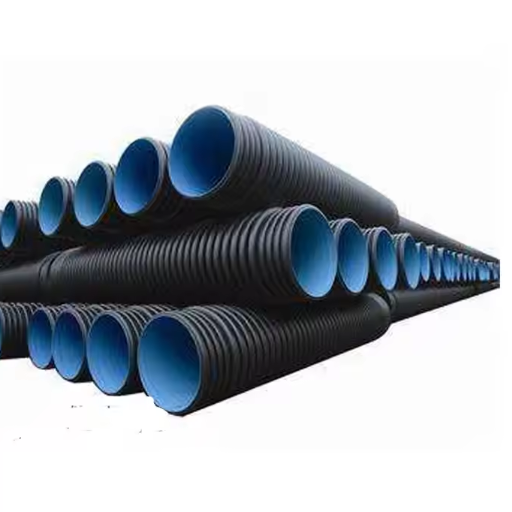
Factors Affecting the Cost of 30-inch HDPE Pipe
The price of a 30-inch HDPE (High-Density Polyethylene) pipe is subject to change due to a variety of reasons. These stem from economic and industry-related changes, which need to be taken into consideration, especially when coming up with a plan for procurement or construction work. First, the composition of the material is one of the primary reasons that determines cost. The different grades of HDPE pipes include PE4710 and PE100, which differ based on durability, pressure resistance, flexibility, and, of course, the price.
Second, the cost is determined by the methods of fabrication. The do-it-yourself quality management pipes are a good example of production lines adhering to rigorous industry certifications like ASTM and ISO standards because they incur certification marks, quality control, and assurance protocol expenses.
Third, size and wall thickness an important cost determinants. Pipes that have greater wall thickness so as to achieve higher pressure ratings (SDR 11 and SDR 17) require more materials and so an increase in cost. In addition to that, the cost of transportation and logistics also adds to the overall spending especially when dealing with larger pipes such as the 30 inch pipe. These larger pipes are not only bulky but also heavy, which influences shipping efficiency over long distances.
As well market demand and availability are tied to the region where HDPE is produced parallel and shipped shows difference in price. Places where production factories are sparse are likely to have higher prices due to relying on other places for supplies. Without a doubt, shifts in the price of oil can influence the selling point of HDPE because it is made with petrochemicals.
In light of all these factors, I must conduct a thorough analysis of costs and partner with suppliers collaboratively to confirm that procurement is aligned with budgets without undermining quality or performance.
Comparative Analysis with Corrugated Metal Pipe
In the table below, you will find a summarized comparison between 30 HDPE pipes and Corrugated Metal Pipes CMP: HDPE pipes outperform in dealing with corrosion, ease of use, and flow efficiency when compared to CMP which is more flexible but harder to maintain and prone to rust.
| Aspect | HDPE Pipe | CMP |
|---|---|---|
|
Rusting |
Immune |
Vulnerable |
|
Mass |
Lightweight |
Heavier |
|
Longevity |
Extended |
Moderate |
|
Flow Rate |
Superior |
Lower |
|
Setup |
Simplified |
Complex |
|
Expense |
Economical |
Costly |
|
Service Life |
~100 years |
~50 years |
|
Reusability |
Moderate |
High |
|
Strength |
Adequate |
Excellent |
|
Eco Impact |
Lower |
Moderate |
Evaluating Manufacturing and Supply Costs
When calculating the manufacturing and supply costs, several equally important factors need to be incorporated to provide a balanced and holistic analysis. To start with, cost estimation has to take into account raw material acquisition, which greatly impacts the total cost. For example, materials such as HDPE (High-Density Polyethylene) are often more economical per unit when compared with metals like steel, but due to their corrosion and durability, they lower lifecycle costs in the long run.
Secondly, the final cost is significantly affected by the energy utilized in all the production stages. The manufacturing of CMP (Corrugated Metal Pipe) usually has more energy intensive processes like welding and galvanization which inflate costs, especially in high energy cost regions. While less energy demanding, HDPE production costs are reliant on global petrochemical prices due to polyethylene extrusion.
Budgeting pertaining to transporting materials has to be included as well, since less dense mp_materials like HDPE are more affordable to transport than CMP. Also, the reliability of the supply chain and local policies related to materials procurement (e.g, tariffs on steel imports) affect initial expenses and overall supply spending.
Integration of these factors alongside existing market information allows stakeholders to strike an optimum balance between an initial outlay of an investment and its anticipated performance, as well as operational and maintenance costs over time. A particular industry’s advanced modeling computations or benchmarks, if available, also help in the careful management of costs and efficient utilization throughout the supply life cycle.
References
Frequently Asked Questions (FAQ)
Q: What are the product details for a 30-inch HDPE drainage pipe?
A: The 30 inch HDPE drainage pipe features a corrugated exterior and is made from high-density polyethylene. It is designed to provide superior corrosion and abrasion resistance.
Q: What is the size specification for the 30-inch HDPE drainage pipe?
A: The 30-inch HDPE drainage pipe typically measures 30 inches in diameter and is often available in lengths such as 20 feet, making it suitable for various drainage applications.
Q: How does HDPE provide superior corrosion resistance?
A: HDPE, or high-density polyethylene, is a material that provides superior corrosion and abrasion resistance due to its chemical and physical properties, making it an excellent alternative to reinforced concrete pipes.
Q: What is the significance of the corrugated exterior in these pipes?
A: The corrugated exterior of HDPE drainage pipes enhances their structural strength and flexibility, allowing them to withstand external pressures and environmental conditions effectively.
Q: In what applications can a 30-inch HDPE drainage pipe be used?
A: These pipes are typically used in large-scale drainage projects, stormwater management systems, and other applications where efficient water conveyance is needed.
Q: What does the bell and spigot design mean in the context of HDPE pipes?
A: The bell and spigot design refers to a jointing system that allows for easy and secure connections between pipe sections, ensuring a tight seal and reducing the risk of leaks.
Q: Is the 30-inch HDPE drainage pipe manufactured to specific standards?
A: Yes, the 30-inch HDPE drainage pipe is manufactured by AASHTO M294 or AASHTO M252 standards, ensuring high quality and performance.
Q: Where can I find detailed information about 30-inch HDPE drainage pipe products?
A: Detailed information about our products, including specifications and applications, can be found in the drainage handbook or product documentation provided by the manufacturer.
Q: Why is HDPE considered an excellent alternative to reinforced concrete pipes (RCP)?
A: HDPE is considered an excellent alternative to RCP due to its lightweight nature, ease of installation, superior corrosion and abrasion resistance, and long service life.




